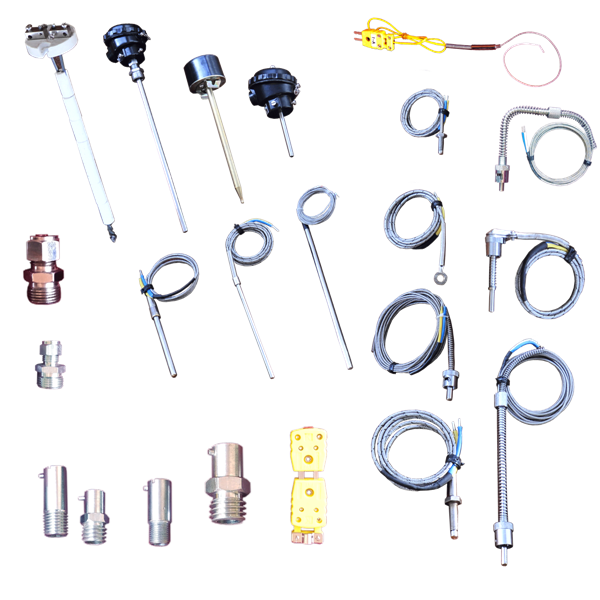Thermocouples and Sensors
Design:
Used to sense the temperature from any heating systems for reading and controlling. Thermocouples consist of two wire legs made from different metals. There are many types of thermocouples, each with its own unique characteristics in terms of temperature range, durability, vibration resistance, chemical resistance, and application compatibility. Type J, K, T, & E are “Base Metal” thermocouples, the most common types of thermocouples. Resistance temperature detectors (RTDs) are sensors used to measure temperature. Many RTD elements consist of a length of fine wire wrapped around a ceramic or glass core but other constructions are also used. The RTD wire is a pure material, typically platinum, nickel, or copper. Sensing accuracy higher than thermocouples, maximum temperature ranges lower than thermocouples. PT100 & PT1000 sensors are the common types of sensors.
Features:
• Mineral Insulated (MI) & non Mineral Thermocouples (optional)
• Isolated T/C & non Isolated T/C
• Available in Pen, Bayonet, Leaf, Adjustable, Ring/washer, Bolt, Holder
movement, Aluminum bulk head type.
• PVC, Asbestos, Teflon, Fiber glass with SS braided insulations
• Sheath material like SS304, SS316, inconel 600, inconel 800, and
titanium for various temperature and applications.
• Sheath diameter min. Ø 1mm to max Ø 25mm
Application:
Ovens & Dryers, Plastic & PVC Extruders, Dies & Moulds, Heating Vessels, Kitchen & Bakery, Laundry, Laboratory equipment.
You must be logged in to post a review.


Reviews
There are no reviews yet.